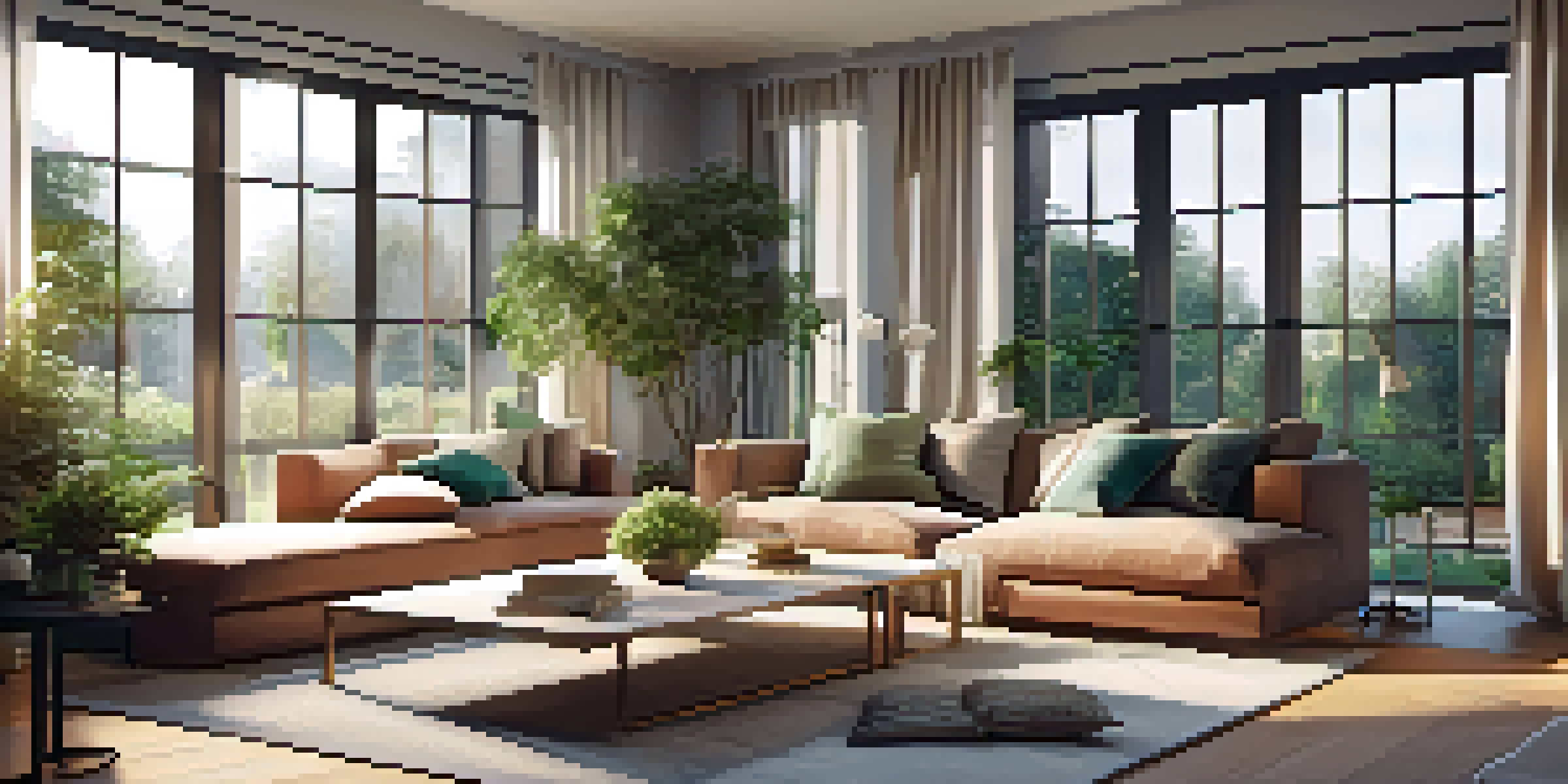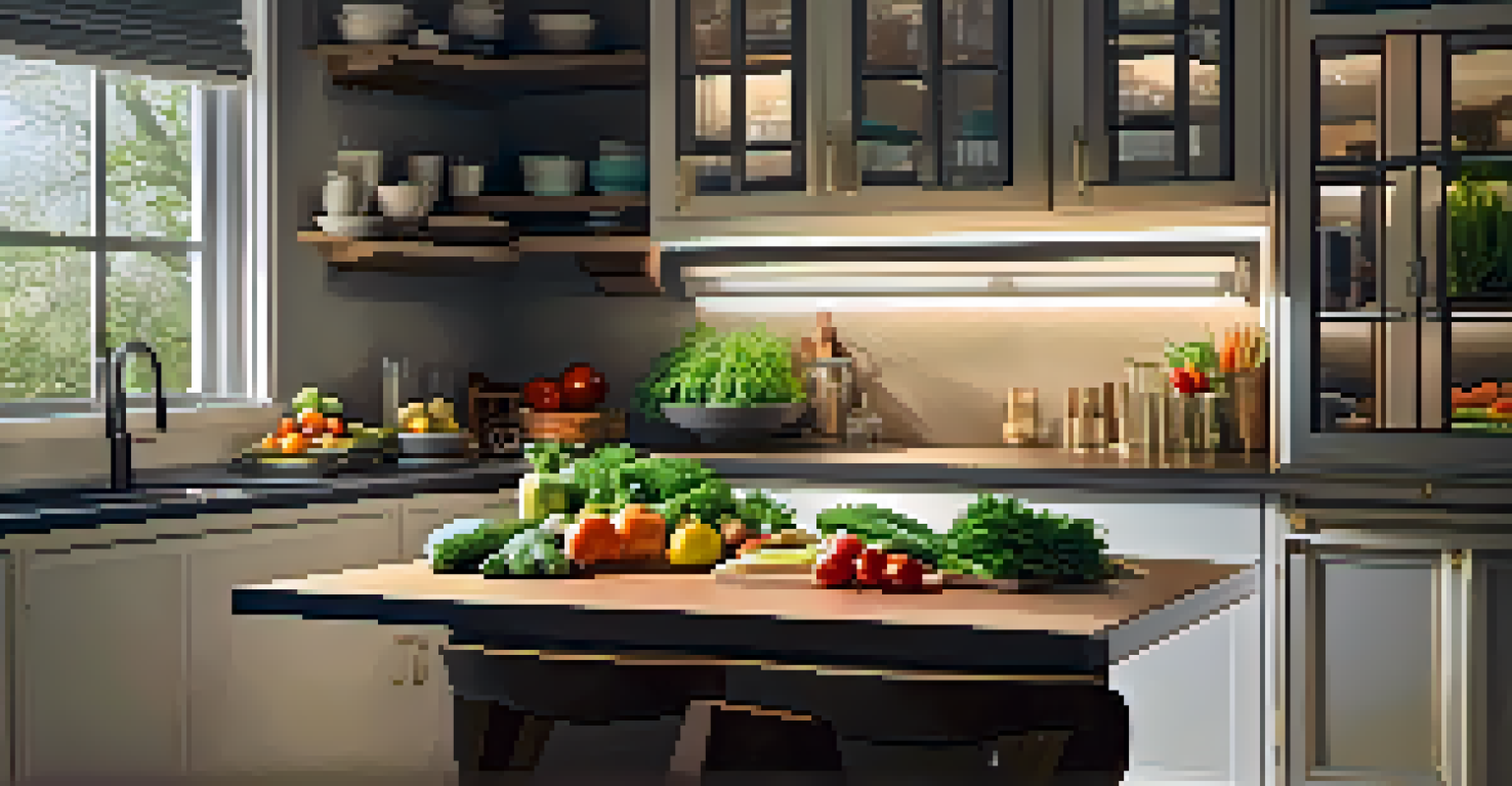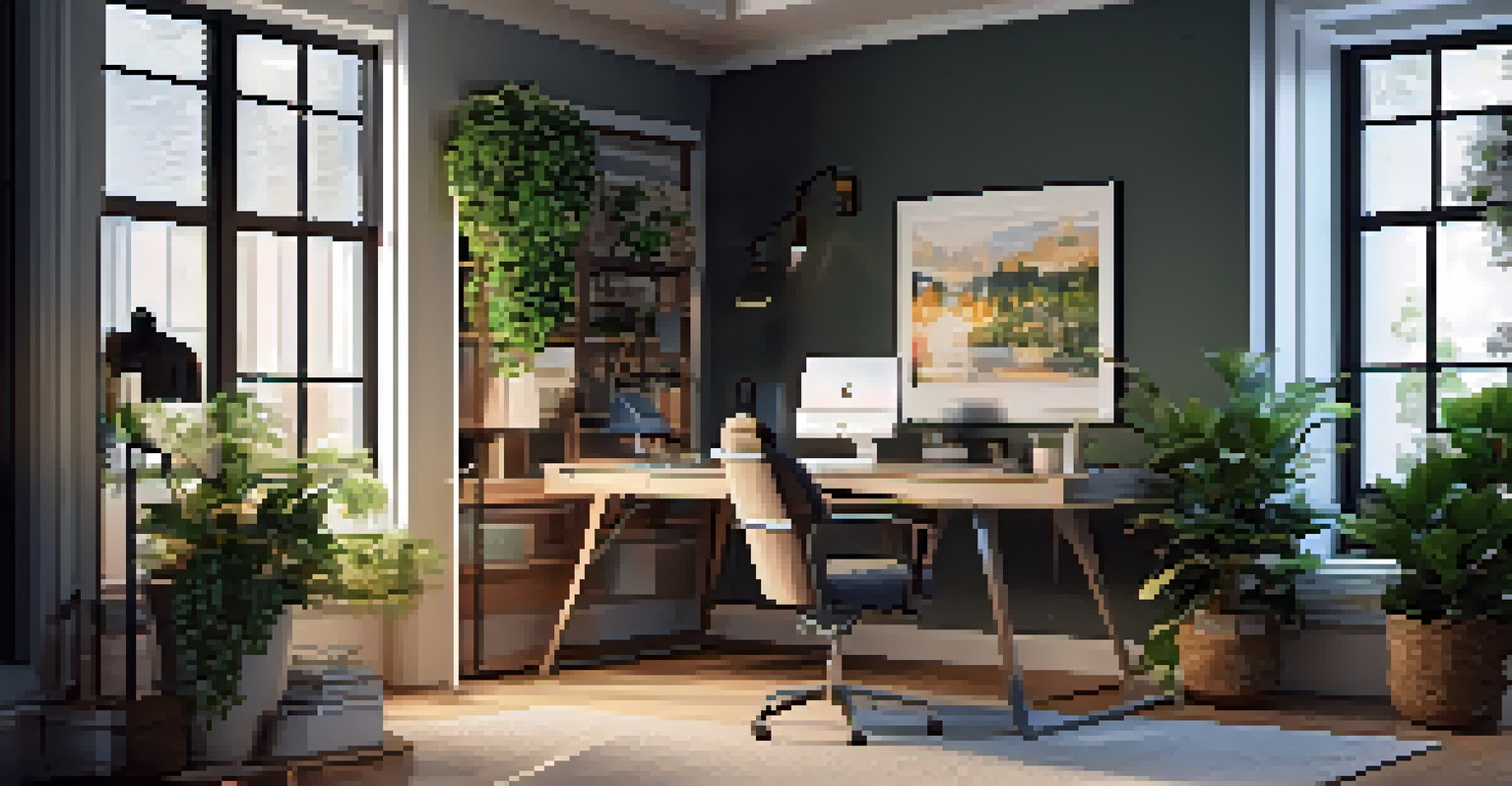How to Design Multi-Functional Spaces with Lighting

Understanding Multi-Functional Spaces in Your Home
Multi-functional spaces are areas in your home that serve various purposes, allowing for flexibility in how you use them. For instance, a living room can double as a workspace or a guest area. This approach not only maximizes space but also enhances functionality, making your home feel larger and more efficient.
The best rooms have something to say about the people who live in them.
The key to designing these spaces is to think creatively about how you can combine different activities. By assessing your daily routines and needs, you can identify which spaces could benefit from this multi-functional design. For example, transforming a corner of your kitchen into a reading nook can provide a cozy retreat without needing additional square footage.
With the right design and lighting, these spaces can transition seamlessly from one use to another. By understanding your lifestyle and the needs of your household, you can create environments that adapt effortlessly, making every square foot count.
The Importance of Task Lighting
Task lighting is essential in multi-functional spaces as it allows you to perform specific activities with ease. For example, installing under-cabinet lights in the kitchen can help you chop vegetables or read recipes without straining your eyes. This type of lighting is focused and direct, providing illumination exactly where you need it.

Consider how different tasks require different lighting solutions. A workspace might benefit from a desk lamp that offers adjustable brightness, while a reading nook may need softer, ambient lighting. By strategically placing task lighting, you can enhance functionality and comfort in your multi-functional areas.
Embrace Multi-Functional Spaces
Design areas in your home to serve multiple purposes, enhancing both functionality and the sense of space.
Remember, the goal is to create a balance that caters to various activities. By investing in quality task lighting, you ensure that each area serves its purpose effectively, allowing you to transition smoothly between roles throughout your day.
Creating Ambiance with Layered Lighting
Layered lighting combines ambient, task, and accent lighting to create a versatile atmosphere. This approach allows you to adjust the mood of your space depending on the activity or time of day. For instance, bright overhead lights can energize a workspace during the day, while softer lights can create a relaxing environment in the evening.
Design is not just what it looks like and feels like. Design is how it works.
In a multi-functional space, layering is key to versatility. Using dimmable fixtures can help you control the brightness and change the ambiance in an instant. Additionally, incorporating floor lamps or wall sconces can add warmth and depth, making the area feel inviting and cozy.
Think of layered lighting as a way to dress your space for different occasions. Just like you might change your outfit for various events, adjusting your lighting can transform your space from a productive work area to a relaxing retreat.
Using Color Temperature to Your Advantage
Color temperature refers to the warmth or coolness of light and plays a significant role in how a space feels. Warmer lights (around 2700K) create a cozy, inviting atmosphere, perfect for relaxing areas, while cooler lights (around 5000K) are ideal for workspaces as they enhance focus and alertness. Understanding this concept allows you to choose the right lighting for each function of your multi-functional space.
Imagine a home office that feels sterile due to harsh lighting versus one that feels warm and inviting. The right color temperature can make a huge difference in how productive or comfortable you feel. By selecting bulbs that suit the purpose of each area, you can enhance both functionality and comfort.
Importance of Task Lighting
Use focused task lighting to improve usability in multi-functional spaces, making activities easier and more enjoyable.
As you design your multi-functional space, consider varying color temperatures for different zones. This thoughtful approach will ensure that each area serves its intended purpose while contributing to a cohesive overall design.
Incorporating Smart Lighting Solutions
Smart lighting solutions can significantly enhance the functionality of multi-functional spaces. With smart bulbs and systems, you can control the brightness, color, and even schedule lighting based on your activities. Imagine walking into a room and having the lights adjust automatically to suit your needs—it's a game changer!
These technologies not only provide convenience but also energy efficiency. You can set timers for lights to turn off when not in use or control them remotely via an app. This means you can easily adapt your lighting to different activities, whether you’re hosting a dinner party or working from home.
Incorporating smart lighting can also add a layer of customization to your space. You can create different ‘moods’ for various activities, making your multi-functional area truly versatile and responsive to your lifestyle.
Maximizing Natural Light in Your Design
Natural light is one of the most valuable resources in any space, especially in multi-functional areas. Maximizing this light can create a more inviting environment and reduce the reliance on artificial lighting during the day. Consider using sheer curtains or strategically placing mirrors to reflect light and brighten up darker corners.
Think about how the placement of furniture can impact the flow of natural light. Arranging your seating to face windows can encourage conversation and connection while allowing ample light to filter through. This not only enhances the aesthetic but also makes your space feel larger and more open.
Maximize Natural Light
Incorporate natural light into your design to create a welcoming atmosphere and reduce dependence on artificial lighting.
By blending natural light with artificial lighting, you create a harmonious balance that caters to various uses throughout the day. This approach not only elevates the overall design but also contributes to a healthier and more uplifting atmosphere.
Designing for Flexibility: Furniture and Lighting
The choice of furniture can greatly influence how well your multi-functional space performs. Opt for pieces that are easily movable or adaptable, such as foldable tables or modular sofas. This flexibility allows you to reconfigure the space based on your current needs, whether it's for a family gathering or a quiet night in.
Lighting should complement this flexibility. For example, portable lamps can be moved effortlessly to different areas as required, ensuring that every corner is well-lit when needed. Having adjustable lighting options allows you to create the perfect ambiance, regardless of how the space is arranged.

By combining versatile furniture with adaptable lighting, you create an environment that can evolve with your lifestyle. This thoughtful design approach allows you to maximize both function and comfort, making your home truly multi-functional.
Final Thoughts on Designing Multi-Functional Spaces
Designing multi-functional spaces with effective lighting is all about balance and adaptability. By considering the various activities that take place in these areas, you can tailor your lighting choices to enhance functionality and comfort. Remember, the goal is to create a welcoming environment that meets the diverse needs of your household.
As you embark on this design journey, keep in mind the importance of layering light, utilizing color temperature, and incorporating smart solutions. These elements will help you achieve a cohesive design that feels both practical and inviting, transforming your home into a versatile haven.
Ultimately, the right combination of lighting and design will not only maximize your space but also enrich your daily life. Embrace the creativity that comes with designing multi-functional spaces, and enjoy the benefits of a home that adapts to you.